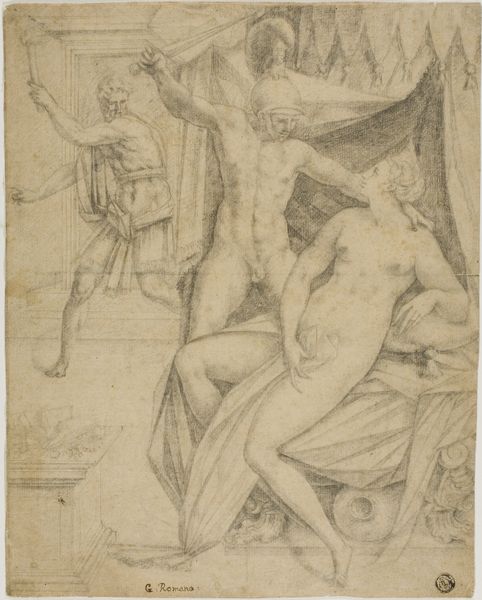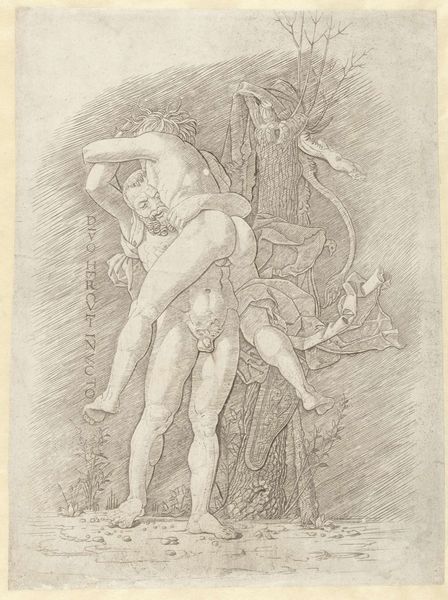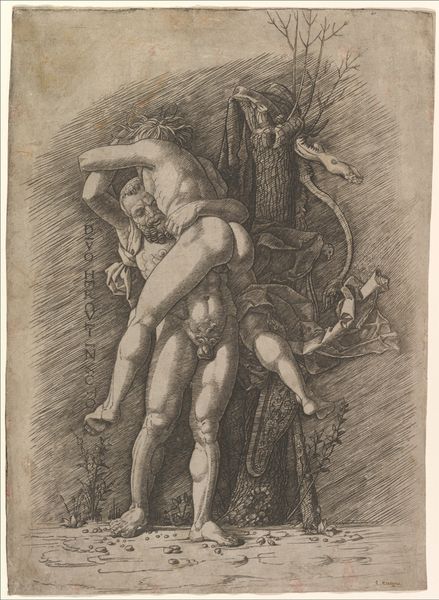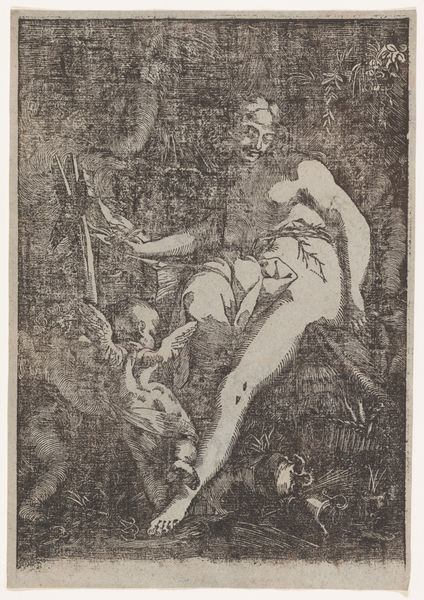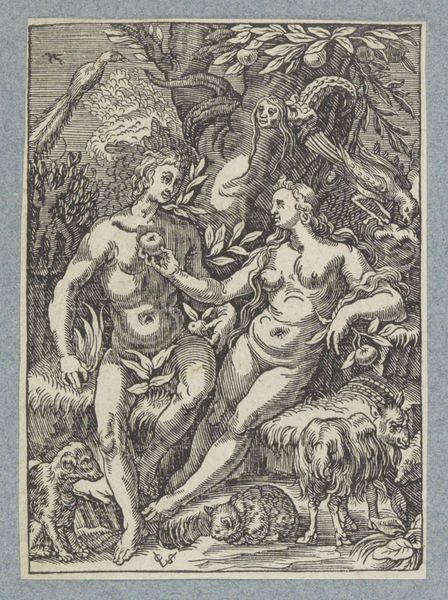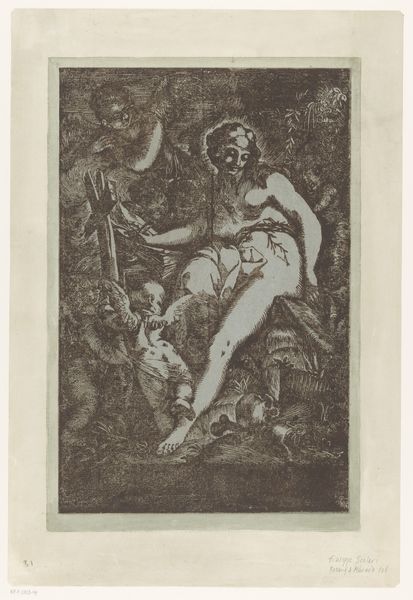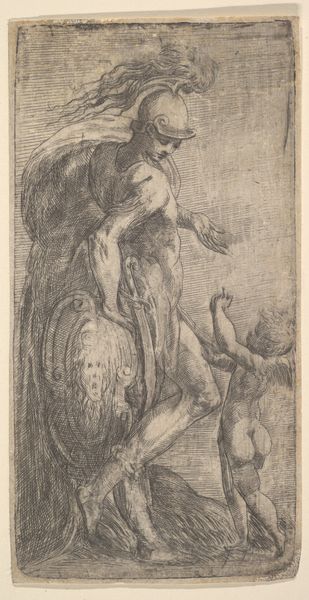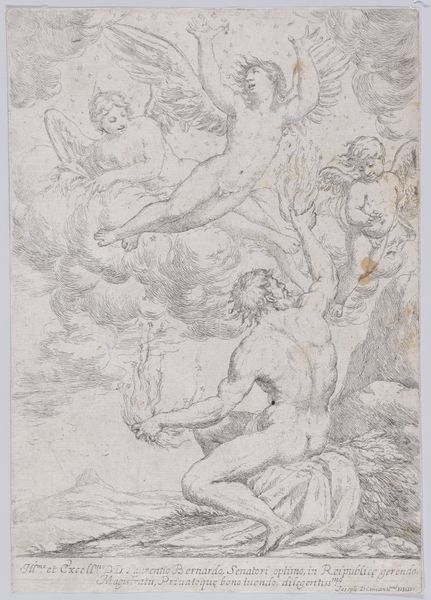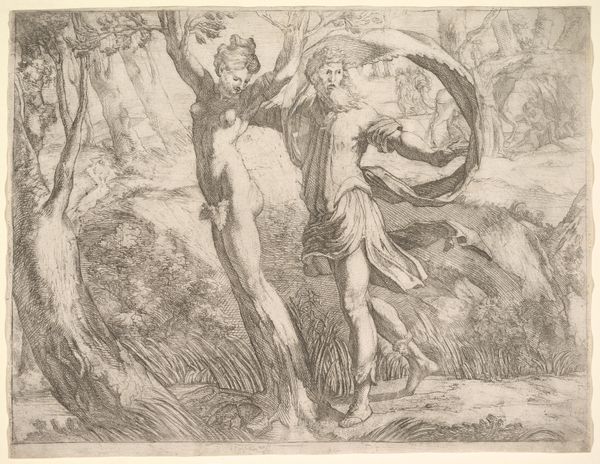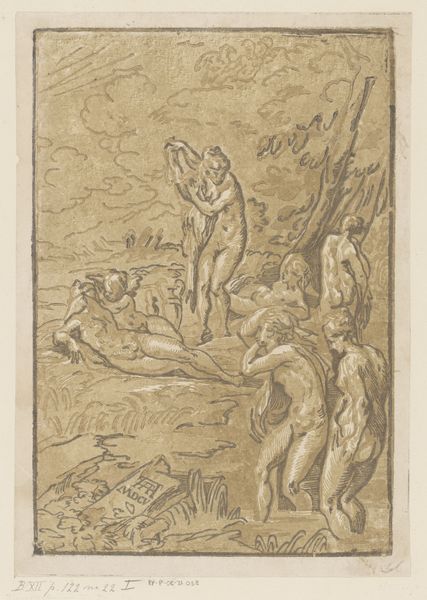
drawing, print, etching, engraving
#
drawing
#
allegory
#
baroque
# print
#
etching
#
classical-realism
#
figuration
#
line
#
genre-painting
#
nude
#
engraving
Dimensions: Plate: 10 3/16 × 6 7/8 in. (25.9 × 17.5 cm) Sheet: 10 3/8 × 7 1/8 in. (26.3 × 18.1 cm)
Copyright: Public Domain
Giuseppe Diamantini made this print of Bacchus, Ceres, and Venus sometime in the 17th century. Here we see the artist, working in Italy, deploying the visual language of classical mythology. But what do these figures mean in this time and place? It's tempting to see this as a simple celebration of pleasure and abundance; Bacchus god of wine, Ceres goddess of agriculture, and Venus goddess of love. However, it's important to remember that in 17th-century Italy, art was almost always made for a specific patron, and the church was a powerful institution. A work like this would have been carefully scrutinized for its adherence to religious doctrine. The classical figures, then, are not simply an excuse for sensual display, but also a nod to classical learning, an important part of elite culture. To fully understand this print, we need to know more about Diamantini's patrons and the cultural institutions that shaped his world. With further research into the archives, we can learn much more about the social and institutional context of this artwork.
Comments
No comments
Be the first to comment and join the conversation on the ultimate creative platform.

